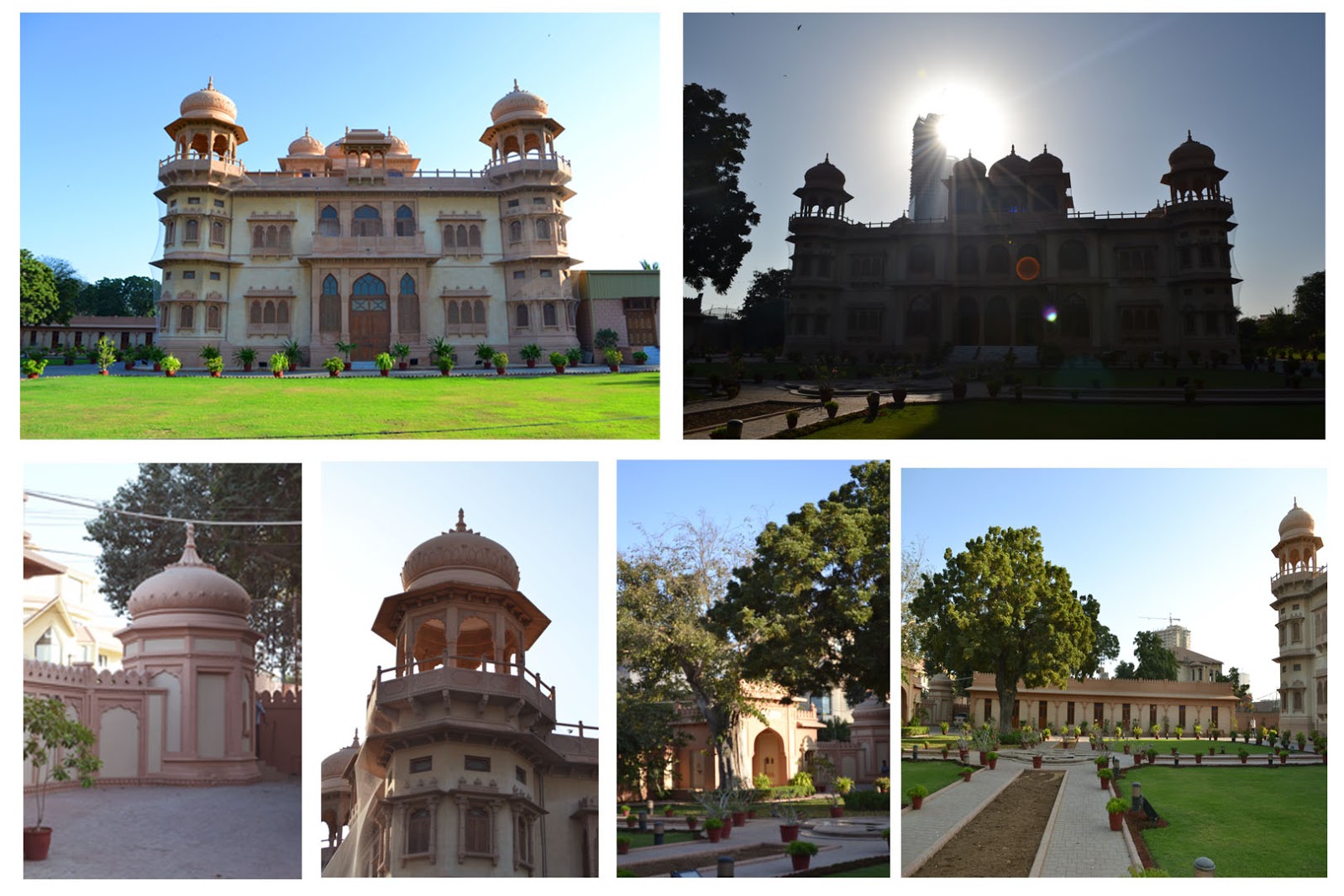The Magnificent Mohatta Palace
History I believe would have been much
more interesting had we been taught more about historic architecture and the
life that existed within it. Perhaps that life still wanders along the
corridors of their architectural wonders, the remnants of which sometimes make
the former inhabitants twist and turn with agony. However, Mohatta Palace, with
its Indo Saracenic architecture is one such place that seems to have the
privilege of having preserved an invaluable heritage with great poise. A step
inside the now museum would take you back to the 19th century that
you would not want to come out of.
Rumour has it that sometimes you can
hear people partying at the palace at night with no one visible; however
rumours can be shunned with rationality and logic until logic suggests that
spirits exist, not to mention the haunted houses around. It’s a beautiful
neighbourhood nonetheless! It makes you want to explore the nearby deserted
houses as well.
Mohatta Palace is a combination of
Mughal, Victorian, and European architecture that had been built with Jodhpur
stone, hence, the yellowish pink hue. This used to be the abode of someone with
great taste; an affluent Hindu Marwari entrepreneur from Rajasthan, India by
the name of Shivratan Chandraratan Mohatta
got this magnificent palace built in 1927 as his summer home. The astute
architect who took on this brilliant project was Agha Hussain Ahmed who had
travelled from Jaipur for an assignment as chief surveyor for the Karachi
municipality and Mohatta Palace was to emerge as the most astounding master
piece of probably his entire career.
The palace spreads over an area of
18,599 square feet and the impeccably designed domes, balustrades, spandrels,
brackets, and railings, form the exquisite façade. There are large rooms on the
ground floor which were designed for entertainment with more private facilities
on the first floor. The terrace faces the Arabian Sea which would have opened
to a spectacular view back in the early 20th century.
Mohatta Palace was home to the Mohatta
family for two decades until finally they decided to leave for India at the
time of partition in 1947. It is when the Government of Pakistan acquired the
building and had the Ministry of Foreign Affairs stationed at the premises. Later,
in 1964, Fatima Jinnah moved to live here, following her demise, her sister,
Shireen Jinnah started living at Mohatta Palace till she too also passed away
in 1980 after which the place was sealed.
In the year 1995, the Government of Sindh
decided to buy Mohatta Palace in order to convert it into a museum which till
date serves education and entertainment at the same time. It was opened for
public in 1999 and I remember our school took us for a visit the same year when
the Talpurs’ treasures were displayed. The silver furniture, those real ruby,
emerald, and sapphire studded daggers, and the coins of that era were some of
the best things I have seen in a museum. Forget the Mughal or the Talpur era, I
want to travel back to the 90s to my school days I dearly miss sometimes!
These days the museum has a cartography
exhibition on display, titled as, ‘Drawing the Line: Rare Maps and Prints’. The
exhibition showcases historic maps and prints of areas that add up to
Pakistan’s land along with neighbouring territories of Afghanistan, Iran,
Central Asia, India, and China. Below is a picture of the Mohatta Palace Museum
Gallery Guide which I got for a donation of Rs. 300. Once you visit this
exhibition and read the guide, you’ll know how sophisticated Islamic history
was, considering the Muslim cartography and architecture.
 |
| This picture includes a vintage Felca winding watch which is owned by my sister since 30 plus years |
And how could I not include the picture
of this splendid painting of Mohatta Palace made by my art teacher, Mr. Hanif
Shahzad. You wouldn’t want to take your eyes of this marvellous piece of art! I
am in awe of how much talented a person can be.
 |
| Picture snapped using my Samsung Galaxy Note 5 |
As far as the palace is concerned, the only
drawback in the view is the tall ugly buildings in the background but don’t
worry, please seek help from Photoshop. Softwares like this come in handy
sometimes.
The palace aka museum is open from
Tuesday to Sunday, from 11 am to 6 pm and the ticket is only wroth Rs. 30, it’s
free however for students, children till a certain age, and senior citizens.
Public transport is also easily available, as far as buses are concerned; those
that have the palace fall in their route are Super Hassan Zai, Bus No 20, and
N.
Here’s more from my trip to history.
Know your history, know your roots and
get to acquaint yourself with the treasures of your homeland! Just observe what
we are still left with …
All Pictures photographs were taken using my Nikon D3100 unless otherwise stated.














Excellent and impressive
ReplyDeleteAmazing... i soo wanna go there too
ReplyDeleteHiba wonderful work you are creating awareness about our heritage whereby making our proud
ReplyDelete